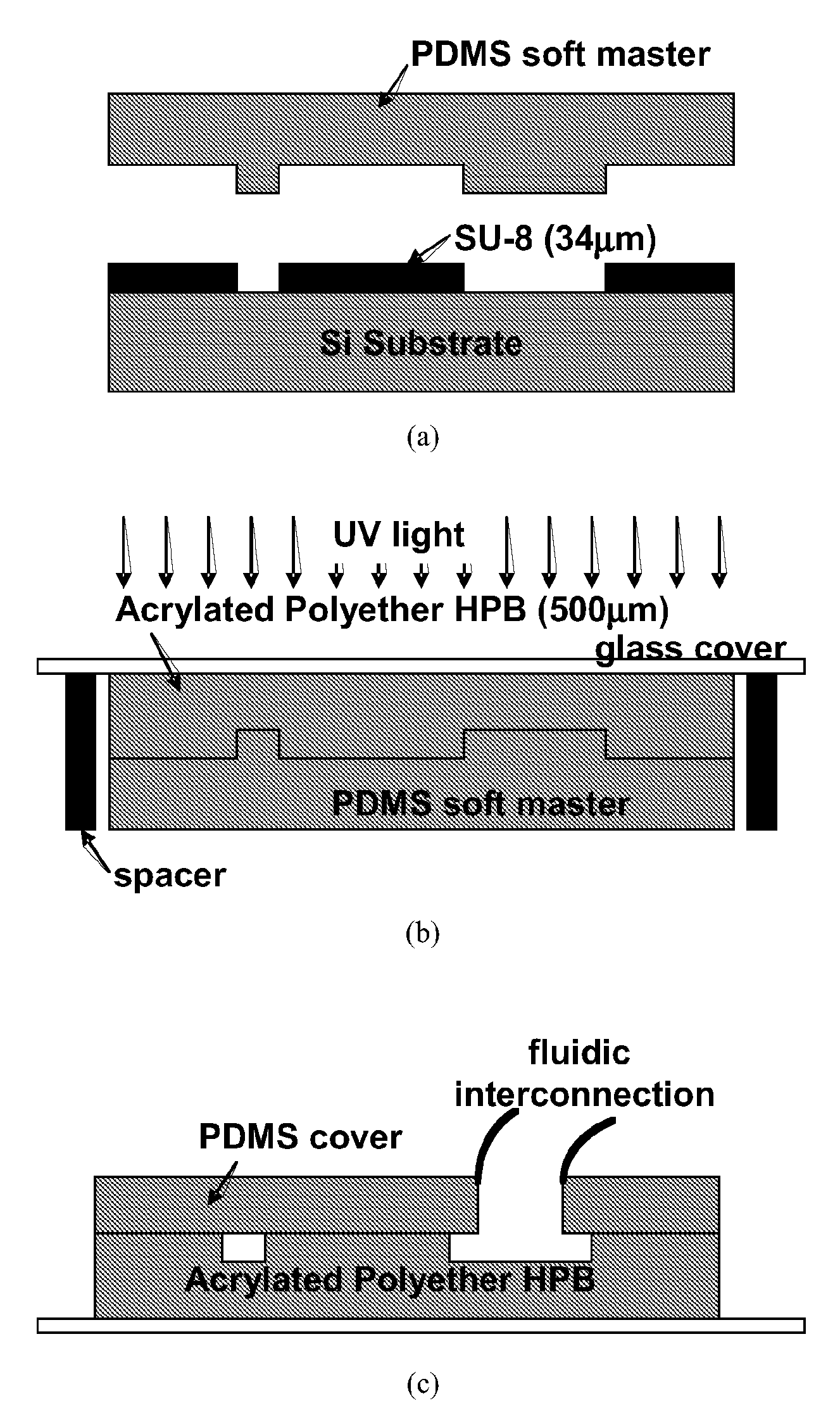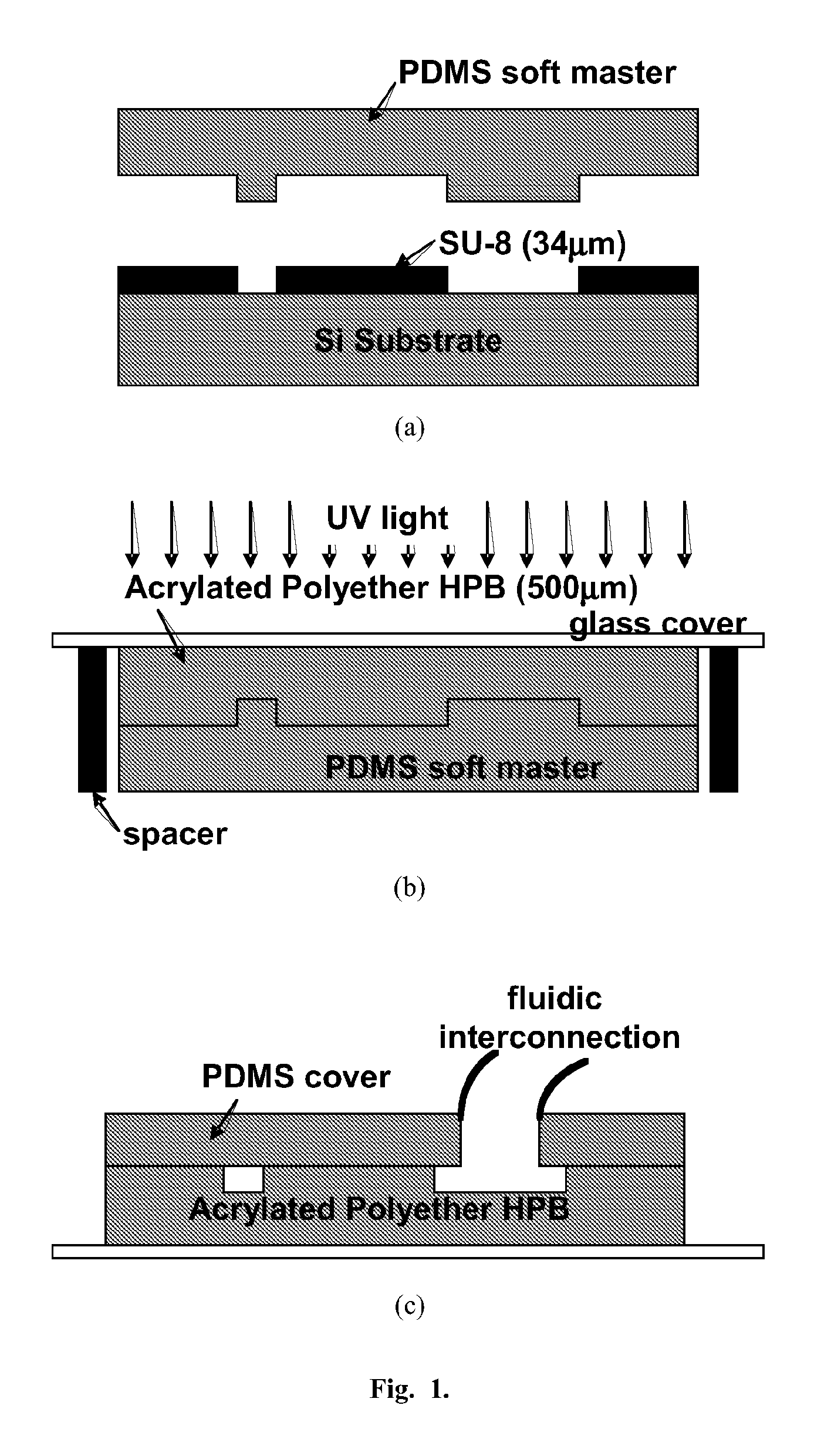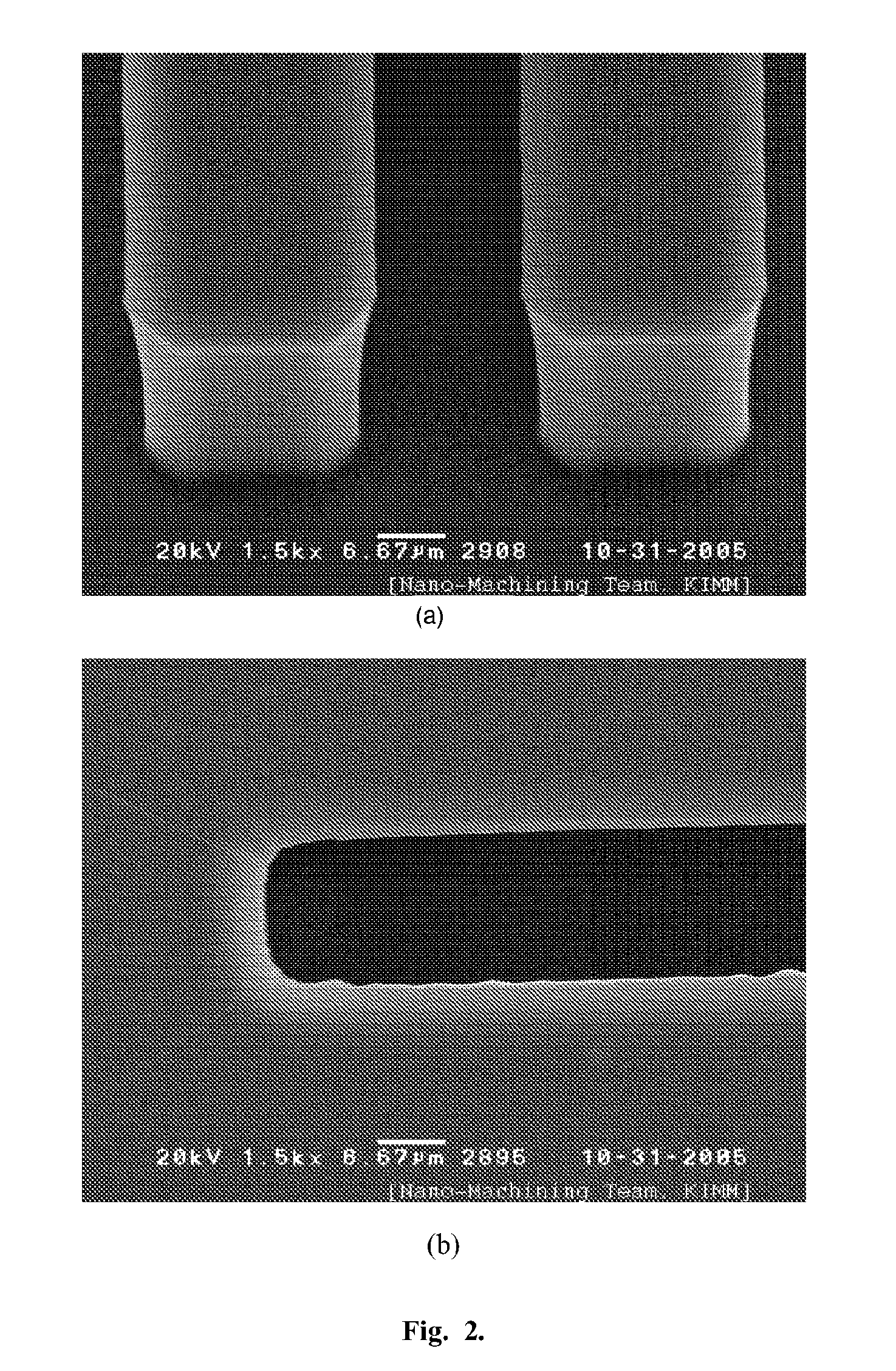Hyperbrached Polymer for Micro Devices
a micro-electromechanical and hyperbracket technology, applied in the field of micro-electromechanical devices, can solve the problems of high internal stress and the time-consuming curing process of pdms, and achieve the effects of short manufacturing time, high internal stress, and fast and low temperature fabrication
- Summary
- Abstract
- Description
- Claims
- Application Information
AI Technical Summary
Benefits of technology
Problems solved by technology
Method used
Image
Examples
example 1
Acrylated Polyether HBP microstructures
[0023]A 3rd generation hyperbranched polyether polyol (synthesized by Perstorp AB, Sweden) giving a 29-functional polyether acrylate (called Acrylated Polyether HBP) was used. The Polyether HBP was synthesized by ring opening polymerization of alkoxylated TMPO derivatives (3-ethyl-3-(hydroxymethyl)oxetane, Perstorp AB, Sweden) [23]. Acrylation was carried out according to the conventional preparation of acrylic esters by condensing polyol with acrylic acid. A detailed description of the photocuring kinetics of this material can be found elsewhere [24]. The photoinitiator used was Irgacure 500 (a mixture of equal parts of 1-hydroxy-cyclohexyl-phenyl-ketone (CAS 947-19-3, M=204.26 g / mol) and benzophenone (CAS 119-61-9, M=182.22 g / mol), supplied by Ciba Specialty Chemicals), at a concentration equal to 2 wt.-%. It is blended with the acrylate monomer at a temperature of 85° C. to facilitate mixing. The UV curing of the monomer was carried out at a...
example 2
Fluidic Digital-To-Analog Converter
[0029]A fluidic digital-to-analog converter [25] was fabricated using the novel process (FIG. 1) with Acrylated Polyether HBP detailed in example 1. The microscopic view of the overall fabricated device is shown in FIG. 4a. The chip size was 1.5 mm×1.5 mm and it consists of four inlet ports, one outlet port and four microchannel networks. FIG. 4b shows the microscopic view of a microchannel network. The length of the microchannel is measured as 605.6±3.2 μm. SEM images of the microchannel cross-section are shown in FIG. 5. We compare designed and fabricated dimensions of the microchannel in Table 2. The error in slope angle, 6.6°, results from the PDMS master fabrication step. We observe the SU-8 pattern for the PDMS master (FIG. 1a) has a similar slop angle. Because of the slope angle, the top and bottom part of the microchannel have different widths, measured as 15.44±0.88 μm and 22.67±1.43 μm, respectively (Table 2). A fluidic filling test was c...
PUM
| Property | Measurement | Unit |
|---|---|---|
| temperature | aaaaa | aaaaa |
| temperature | aaaaa | aaaaa |
| pressure | aaaaa | aaaaa |
Abstract
Description
Claims
Application Information
 Login to View More
Login to View More - R&D
- Intellectual Property
- Life Sciences
- Materials
- Tech Scout
- Unparalleled Data Quality
- Higher Quality Content
- 60% Fewer Hallucinations
Browse by: Latest US Patents, China's latest patents, Technical Efficacy Thesaurus, Application Domain, Technology Topic, Popular Technical Reports.
© 2025 PatSnap. All rights reserved.Legal|Privacy policy|Modern Slavery Act Transparency Statement|Sitemap|About US| Contact US: help@patsnap.com



